Description
EDIUS description
Whenever an editor has to wait and pause for an NLE-system to render, recover and respond creativity suffers. EDIUS Pro 9 on the other hand offers outstanding performance even with a standard notebook. EDIUS Pro supports a multitude of formats and handles highest resolutions in real-time true to the slogan: “Edit Anything, Fast”. EDIUS Pro 9 is the perfect finishing tool for professional filmmaking including documentary and 4K-productions.
More formats and an optimized workflow
EDIUS Pro 9 supports more file formats than any other NLE. This includes Sony XDCAM, Panasonic P2, Canon XF as well as the EOS film formats and many more. For postproduction purposes Grass Valley’s highly performant intermediate 10-bit-HQX-Codec is the optimal choice. While the HQX-Codec is already included the Avid DNxHD-codec is available as an option. The EDIUS 9 Workgroup-version includes both of these codecs.
EDIUS is well known to support the camera manufacturers’ newest codecs at very early stages – sometimes even before the corresponding camera-models hit the shelves!
With EDIUS Pro 9 you master every format and recording method. This includes Sony XAVC (Intra/Long GOP), / XAVC S, Panasonic AVC-Ultra, Canon XF-AVC (e.g.Canon 4K Camcorder XC10 and C300 Mark II) and more.
64-bit and 4K / Quick Sync / ProRes
Built from scratch as a native 64-bit-solution for Windows 7, 8 and 10 EDIUS Pro 9 utilizes all of the advantages of today’s advanced 64-bit-operating systems. This includes the usage of up to 512 GB of system RAM for an optimal throughput of data, which is essential when using multiple layers, editing 3D and working with multicam-projects.
EDIUS Pro 9 is optimized for Intel Quick Sync like no other NLE. Not only does Quick Sync speed up the encoding of H.264 exporting files up to 10 times faster. Playing back H.264-footage on the timeline has been greatly improved as well as enabling to smoothly edit 4K-material even with a less then optimized office PC.
Quick Sync is a hardware implemented GPU-feature offered by many of Intel’s current Core i7, Core i5 and even Core i3 processors. Versions i7-4790K and i7-6700k are highly recommended for desktop-PCs as well as the i7-4810QM and i7-6820HQ for notebooks.
From version EDIUS Pro 8.10 the performance of ProRes and DNxHD footage on the timeline has been speeded up by 250 %.
Best in class editing of different formats on one timeline
Like no other NLE EDIUS Pro 9 is capable of a real-time-editing, real-time up- and down-scaling, framerate- and format-conversion allowing mixing all kinds of different formats and footage on one timeline. If you work in HD then simply move any 4/3-SD-file onto the timeline, just mix NTSC- and PAL-footage, add some 4K-shots and footage with different framerates. EDIUS Pro 9 takes care of any needed real-time conversion with no time wasted on manual transcoding or rendering queues.
EDIUS Pro 9 supports resolutions from 24×24 pixel up to 4Kx2K (4096×2048), all on one timeline, even nested in sequences, including alpha-channel (transparency) and all in real-time.
Key features of EDIUS Pro 9 and Workgroup 9
Key features of EDIUS Pro 9 and Workgroup 9
- NEW: “Buy once and use forever”: EDIUS Pro 9 and EDIUS Workgroup 9 are solutions that you purchase once and use without time limit – as the majority of users wants. So there is no subscription or rental model and no time limit for the use.
- NEW: Always up to date: Numerous new features and enhancements will be added free of charge to users of EDIUS Pro 9 and EDIUS Workgroup 9 during the product cycle of EDIUS 9 until mid/end of 2019
- NEW: Comprehensive HDR Workflow:
- Support for HDR PQ and HLG
- Native support of HDR video sources (professional camcorders, drones, action cams and smartphones)
- Native HDR cut
- Conversion of SDR and Log to HDR
- Mix of SDR and HDR on one timeline
- Real-time preview on HDR monitor when editing (Tip: We recommend Sony HDR monitors and as HDR control monitor the Atomos Sumo19/19M)
- Export of HDR files for HDR LCD TVs and YouTube
- Export of HDR files in native XAVC format
- NEW: Support for the BT.2020 and BT.2100 color space
- NEW: Export of H.264 files with 10bit and 4:2:2
- NEW: Support of the Cinema Raw Light Format of Canon C200
- NEW: Native 10bit Cinema DNG support
- NEW: General acceleration of EDIUS by faster program start and accelerated processing (even the installation of updates has been improved)
- NEW: Improvement of the user interface (as a reaction to user feedback)
- NEW: Including updated Mync media management software
- enhanced metadata analysis, also for the search function
- advanced storyboard editing functions
- improved working with offline files
- NEW: Cloud ready: EDIUS can run in the cloud. Ideal for users, who have their video material in the cloud
- NEW: In the future EDIUS will also be available as a floating license for companies
- NEW in the Workgroup version: Support of 4K 50/60p output via I/O hardware
- NEW: Important: the list of new features in EDIUS 9 does not end herewith. EDIUS 9 has the same system with free .xx updates like EDIUS 8, which has been much appreciated by users: Every few months there is an update with new features and/or format support. In EDIUS 8, e.g. the following enhancements were added after the 8.00 version: primary color correction, LUT support, color space conversion, Log support, optical flow, motion tracker, new still picture engine (without Quicktime), loudness meter with auto correction, Mync Media Asset Management with storyboard and upload function, better metadata support, new proxy mode with different resolutions, up to 64 channels of audio, 4K monitor and high DPI support, improved ProRes and DNxHD support, GPU acceleration for primary color correction, Raw support, draft preview mode with reduced preview quality for more real-time, project templates, open FX support and much more.
- NEW: Planned improvements in upcoming 9.xx updates are, for example:
- a function for synchronizing clips via audio (for multicam editing)
- support for 8K and high frame rate
- H.265 export
- and much more…
- Titler format independent of the DPI setting of the computer
- Possibility to change between display light and scene light in the primary color correction
- Date and time display on the screen for XAVC-S clips
- Manual input of volume and panorama values in the audio mixer
- EDIUS Workgroup – loudness auto correction for export
- High DPI support for all parts of the user interface including QuickTitler, layouter and effects settings
- Accelerated export for H.264 material
- Import/editing of H.265 HEVC material (e.g. Panasonic GH5)
- Support for metadata of current Panasonic cameras (e.g.GH5)
- Export of the storyboard in Mync as XML format possible
- Storyboard in Mync with background music
- Include preview frame in the OUT marker – especially interesting for previous Avid users
- High quality slow-motion effect through Optical Flow Technology
- High quality frame rate conversion directly in the timeline through Optical Flow Technology (in real-time!)
- Different resolutions and quality levels for proxy-files
- Motion Tracker in order to track and use filters and effects on objects and image areas
- LUT (Look-Up-Table) import
- Extensive LOG support
- HDR workflow
- New primary color correction with many settings possibilities and YRGB curves
- Utilization of the GPU to accelerate complex color corrections (support of the primary color correction)
- Possibility to use EDIUS also without Apple QuickTime (QuickTime has security lapses)
- Optimized preview mode with reduced resolution (if required) for more real-time effects (only the Workgroup version)
- Mync for managing video, audio and stills. Allows tagging, entering and searching for keywords, retrieving and previewing clips in high quality.
- Optimal 4K-workflow supporting 3rd party hard- and software like Blackmagic Design Decklink 4K Extreme, Ultra Studio 4K, Intensity Pro 4K as well as EDL and AAF import/export with the high-end Grass Valley HQX Codec along with DaVinci Resolve 12 as color grading solution.
- Supports editing hardware from leading manufacturers like Blackmagic Design, Matrox and AJA.
- Supports Open FX Plug-ins.
- Compatible with any resolution between 24×24 pixel up to 4Kx2K, real-time-framerate-conversion on one timeline for a fluent and uninterrupted editing experience.
- Optimized GUI for an even faster workflow.
- Optimized visibility and ergonomics supporting 4K/UHD-displays.
- Fast and easily customizable GUI supporting an unlimited number of video-, audio-, title- and graphic-tracks.
- Supports the newest file-formats like Sony XAVC (Intra/Long GOP)/ XAVC S and Panasonic AVC-Ultra/AVC-Intra 4K 422.
- Supports the new Canon 4K XF-AVC-Codecs (import only) that comes with the new Canon 4K-Camcorder XC10 and C300 Mark II.
- Native support of the majority of different video-formats like Sony XDCAM, Panasonic P2, Ikegami GF, RED as well as Canon XF and EOS and more.
- Fastest and most responsive editing of AVCHD-material available on the market.
- Multicam-editing allowing up to 16 sources simultaneously supporting the editing-card’s real-time video output.
- Improved MPEG encoder/decoder
- Improved H.264/AVC encoder/decoder for even faster encodings of 4K XAVC-material.
- Optimized playback of 4K H.264-material.
- Optimized for the Intel Core I architecture 4th generation (Haswell).
- Native 64-processing allowing the allocation of maximum RAM for an optimal real-time-experience.
- Proxy mode workflow enabling older computers to work fluently even on complex projects thus securing your investment on hardware (ROI).
- Supports Intel Quick Sync acceleration for an extreme fast H.264-export (ideal for H.264 based formats like AVCHD and SONY X-AVS S and exporting to Blu-ray disk).
- Fast handling of large quantities of still pictures (JPG, TGA, DPX and more).
- Excellent workflow to edit stereoscopic 3D video-footage.
- Built-in image stabilization enhancing shaky footage.
- Direct timeline-export to DVD and Blu-ray.
EDIUS Workgroup 9 – Differences to EDIUS Pro 9
EDIUS Workgroup 9 contains all features of EDIUS Pro 9 and supports the same plug-ins and hardware as EDIUS Pro 9. On top of that EDIUS Workgroup 9 offers additional features and benefits that we will describe in the following.
EDIUS Workgroup 9 addresses broadcasters as well as individual users in need of an enhanced feature set. The workgroup-version allows connecting to the Grass Valley STRATUS Video Produktion & Content Management System and working directly with a Grass Valley K2 SAN-system. Furthermore network solutions like a variety of MAM-systems (media asset management) are supported.
Especially in a broadcast environment with EDIUS as a strong player all across the globe, networking features are essential. Combined with GV STRATUS several cutters can work on the same story sharing the same source material, media and metadata for an ultrafast turnaround.
This combination supports and serves numerous destinations at the same time such as playout-servers, content management systems, social media channels and digital libraries.
The combination of EDIUS Workgroup 9 and GV STRATUS also offers an efficient content management system including workflow automation, the administration of user rights and storage optimization.
Even working remotely from a home office or directly from the set is possible with this system only requiring an internet-connection. You can search, stream and view stories as well as edit projects by proxy mode in low resolution or transfer the high-res-material onto your local storage before editing. When you have finished editing, the project file will be auto-conformed by the GV STRATUS Render Engine workstation computer for final processing and output.
If systems are not connected to GV STRATUS, proxy mode editing can also be made available by using the optional EDIUS XRE conform engine.
Different to EDIUS Pro 9 the EDIUS Workgroup 9 version allows an offline-activation. Therefore the editing system does not need to be connected to the internet. Generating an EDIUS ID is possible if you wish to do so but not mandatory.
Furthermore, only with EDIUS 9 Workgroup it is possible to select the preview quality. For example, UHD / 4K material or clips with many effects and filters can be viewed in real time. Moreover, only with the Workgroup version it is possible to view material in UHD (“4K 16:9”) at 50p/60p on the preview monitor by using editing cards from e.g. Blackmagic Design or AJA.
There are several additional differences between EDIUS Workgroup 9 and EDIUS Pro 9. We have listed those in the following table and additionally commented on some features for a better understanding.
Minimum System Requirements (standalone)
(Updated for software version 9.30)
OS:
Windows 7 64-bit (Service Pack 1 or later), Windows 8/8.1/10 64-bit
Note: See Memory section below for physical memory limits of each OS.CPU:
Any Intel i3/i5/i7/i9, core 2 or Xeon CPU as well as any AMD Ryzen CPU. Each CPU with SSSE3 instruction set.
Processors with Intel QuickSync technology enable H.264/H.265 hardware acceleration.
Memory:
2 GB RAM minimum (4 GB or more recommended)
Requirements for RAM and video memory vary depending on the project format. For SD/HD projects: 4 GB or more RAM recommended. For 4K projects: 16 GB or more RAM recommendedMaximum amount of RAM is based on the physical memory limits of each OS.
Windows 10, Enterprise and Pro, 64-bit: 512 GB
Windows 8/8.1, Enterprise and Pro, 64-bit: 512 GB
Windows 8/8.1, 64-bit: 128 GB
Windows 7, Ultimate, Enterprise, and Professional, 64-bit: 192 GB
Windows 7, Home Premium, 64-bit: 16 GB (not recommended for complex 4K projects)
Windows 7, Home Basic, 64-bit: 8 GB (not recommended for projects with more than HD resolution)
Graphics Card:
Supporting higher resolution than 1024×768 32-bit. Direct3D 9.0c or later and PixelShader Model 3.0 or later is requiredRequirements for video memory size when using GPUfx will vary depending on the project format. For 10-bit SD projects: 1 GB or more recommended, for HD/4K projects 2 GB or more recommended
Note: Requirements for video memory vary depending on the project format. See Memory section above for details.
Use of several monitors:
EDIUS can be used very comfortably over several PC screens, whereby the scaling (DPI setting) must be the same on all monitors. Ideally, you use several monitors with similar or same size and resolution.
Hard Disk:
6 GB of hard disk space is required for installation
Drive with SATA/7,200 RPM or faster is required for video storageAvailable hard drive disc space should be twice the size of the file to be edited
Optical Drive:
Blu-ray Disc writer is required when creating Blu-ray Discs
DVD-R/RW or DVD+R/RW drive is required when creating DVDs
Sound Card:
Sound card with WDM driver support is required
USB Interface:
Memory-card-readers, camcorders or video-decks require USB 2.0 or USB 3.0 connectionFirewire Interface:
Older camcorders (DV/HDV) often require firewire-connection by an IEEE-1394 port. With windows versions 8.1 and 10 the installation of the legacy firewire driver might be necessary.
Network/Internet connection:
Important for EDIUS Pro 9: Internet connection required for software license activation, thereafter Internet connection is required at least once every 60 days to maintain usage.Should you not be able to meet the internet-connectivity-requirements you may apply for a special EDIUS Pro 9-version allowing an offline-installation. Please contact us to help you.
Note: EDIUS 9 Workgroup (different to EDIUS Pro 9) offers offline-activation. Internet-access is not required. With EDIUS 9 Workgroup creating an EDIUS ID is possible if you prefer but not mandatory.
Information about the activation-system of EDIUS 9
Prior to the introduction of EDIUS 9 Grass Valley allowed users to activate EDIUS up to three times: typically for a desktop PC, a notebook and one more activation as an emergency-reserve for unforeseeable events. Regretfully this system was subject to misuse; therefore Gras Valley changed the system to be able to deactivate the usage of illegal software. Most users will not notice any difference. But from time to time (at least once within 60 days) the Grass Valley-system will try to verify the EDIUS ID. Therefore it is important to connect the editing-system to the internet from time to time.Service and support
EDIUS comes with Grass Valley’s 90-day limited warranty.
Support is available through your authorized professional EDIUS-dealer.
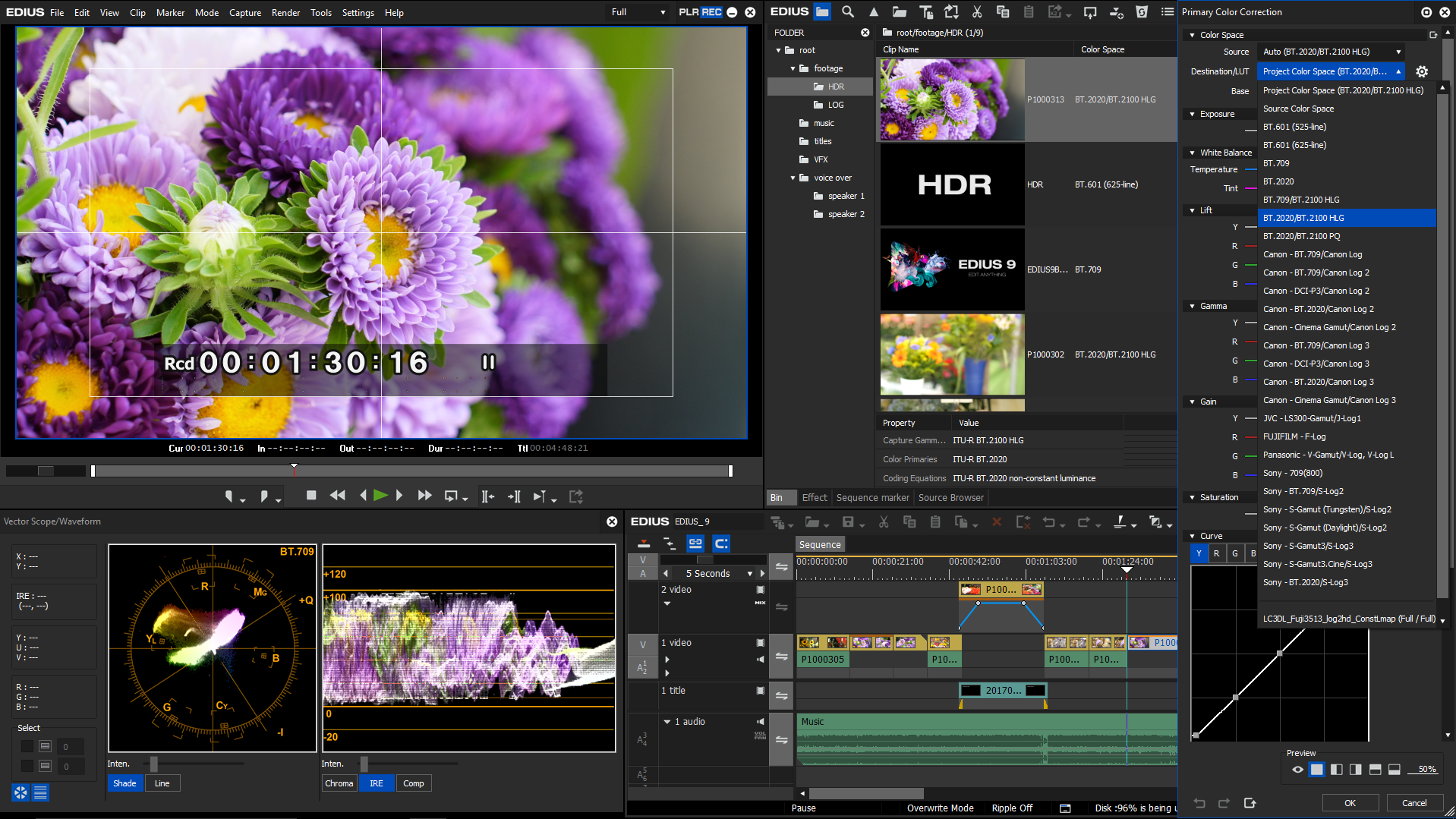
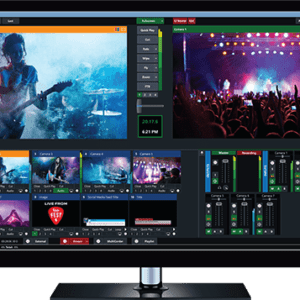
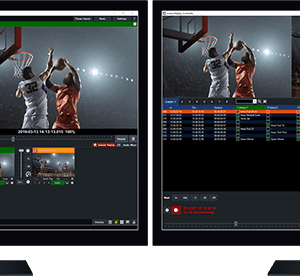
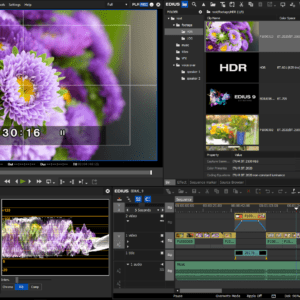
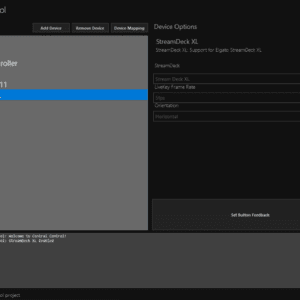
 D5 Creation
D5 Creation